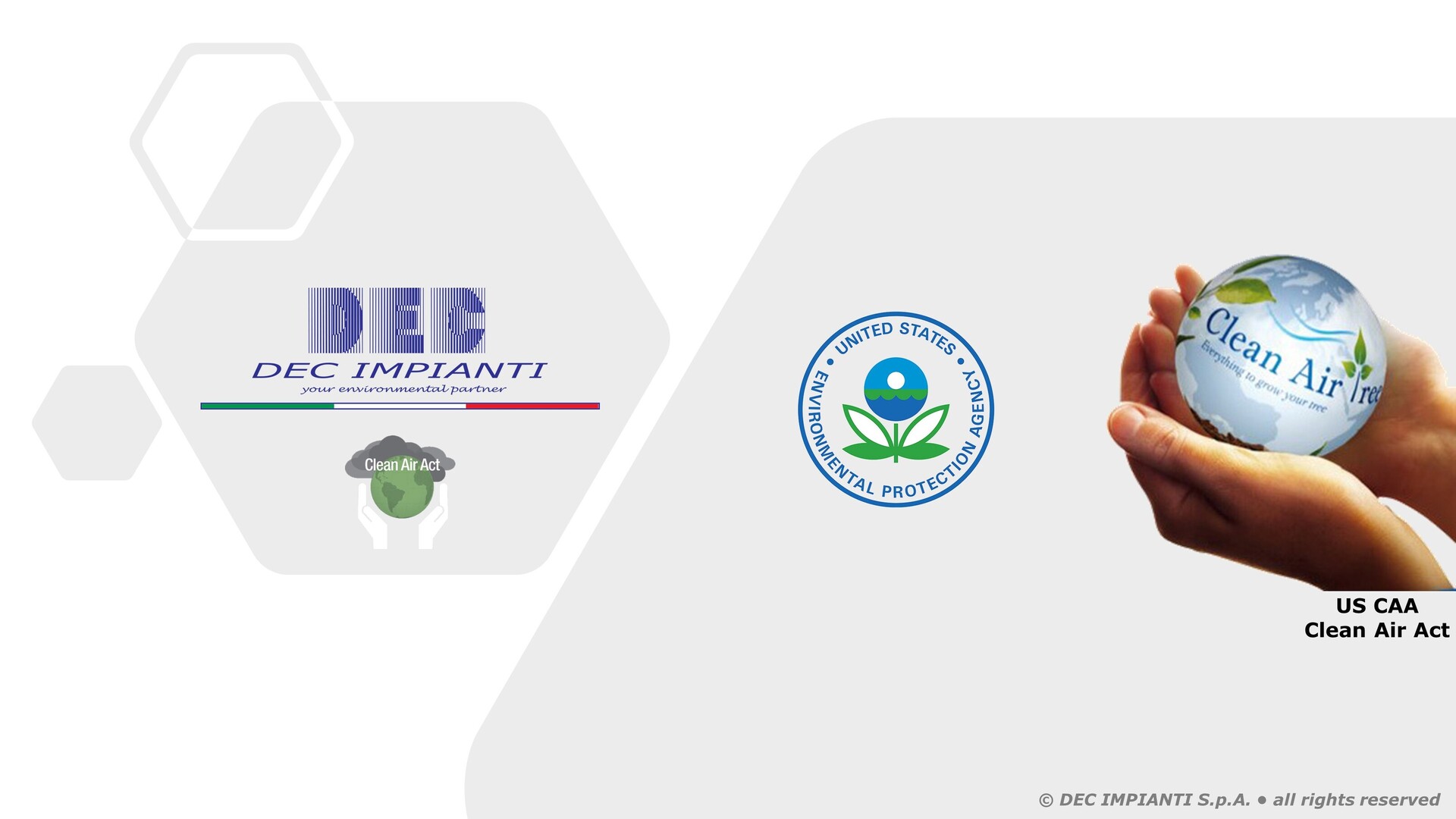
United States • CAA | Clean Air Act
EPA | RACT | CTG | SIP | NAAQS
The Clean Air Act (CAA) is a cornerstone of United States of America environmental legislation, mandating that U.S. member states take proactive measures to manage and mitigate the environmental repercussions of industrial emissions. This influential legislation establishes stringent emission thresholds and multifaceted prerequisites for an extensive spectrum of industrial operations, with the overarching objective of curbing pollution originating from industrial sources and fostering environmental protection through a comprehensive approach.
The Clean Air Act was initially passed in 1963 and has since undergone several amendments, with the most notable being the amendments in 1970 and 1990. These amendments strengthened the law and expanded its scope to address emerging environmental challenges.
In Europe (EU), the equivalent legislative approach is covered by the EU Industrial Emissions Directive (IED).

US • CAA | Clean Air Act • Environmental Protection
The primary goal of the CAA is to protect and improve air quality in the United States. It recognizes the adverse health and environmental effects associated with air pollution and establishes regulatory mechanisms to control and reduce emissions of pollutants that contribute to air quality problems.
US • CAA | Clean Air Act • Regulation of Industrial Emissions
One of the fundamental aspects of the CAA is its regulation of industrial emissions. It sets emission limits and other requirements for various industrial activities and sources, including power plants, factories, refineries, and other facilities that emit pollutants into the air. These emissions can include pollutants such as sulfur dioxide (SO2), nitrogen oxides (NOx), volatile organic compounds (VOCs), particulate matter, and hazardous air pollutants.
US • CAA | Clean Air Act • Integrated Approach
The CAA takes an integrated approach to address air pollution. It includes provisions for the establishment of National Ambient Air Quality Standards (NAAQS) to define acceptable pollutant levels in the ambient air. States are required to develop State Implementation Plans (SIPs) to meet these standards. Additionally, the Act promotes the use of pollution control technologies and encourages the development of cleaner, more efficient industrial processes.
US • CAA | Clean Air Act • EPA Oversight
The U.S. Environmental Protection Agency (EPA) is the federal agency responsible for implementing and enforcing the Clean Air Act. The EPA sets emission standards, monitors air quality, and works in collaboration with state and local agencies to ensure compliance with the law.
US • CAA | Clean Air Act • Public Health and Environmental Benefits
The CAA has had a significant positive impact on public health and the environment. It has helped reduce air pollution-related illnesses and deaths, improved air quality in many areas, and contributed to the prevention of environmental damage, such as acid rain and smog formation.
US • CAA | Clean Air Act • Challenges and Ongoing Efforts
Despite its successes, challenges remain in achieving and maintaining clean air. Emerging pollutants, climate change considerations, and the need to address environmental justice concerns are areas of ongoing focus and adaptation within the CAA.
